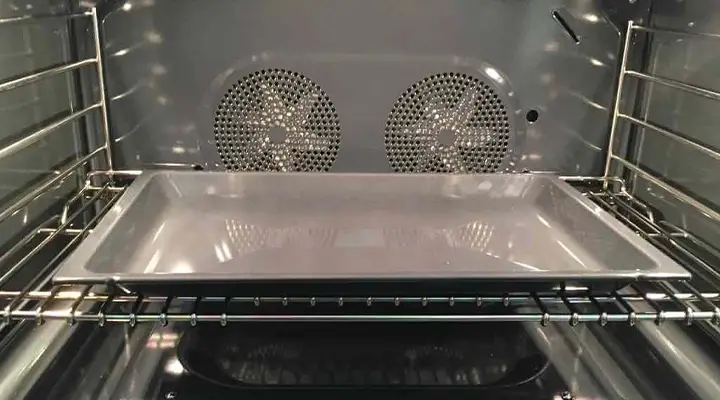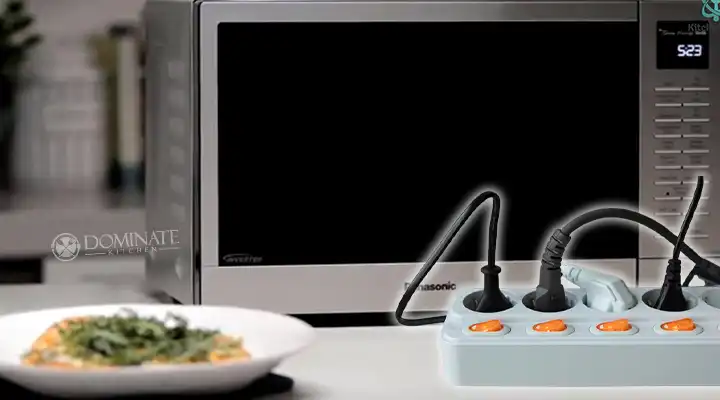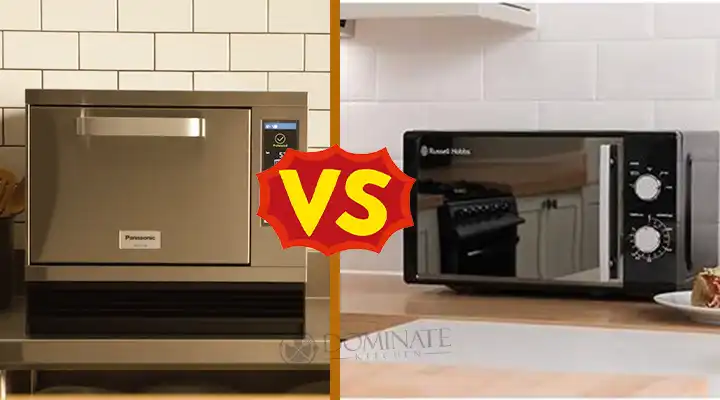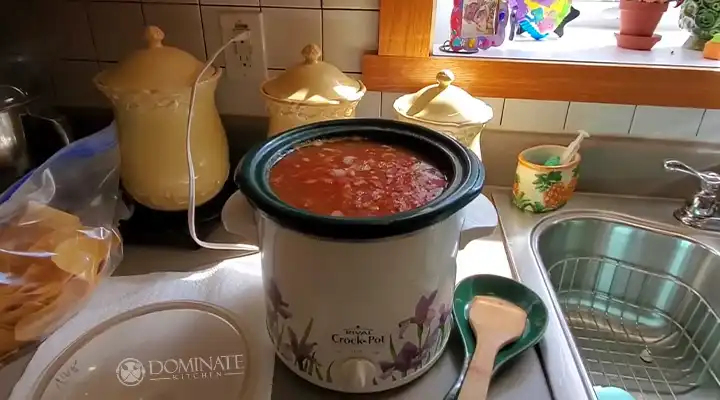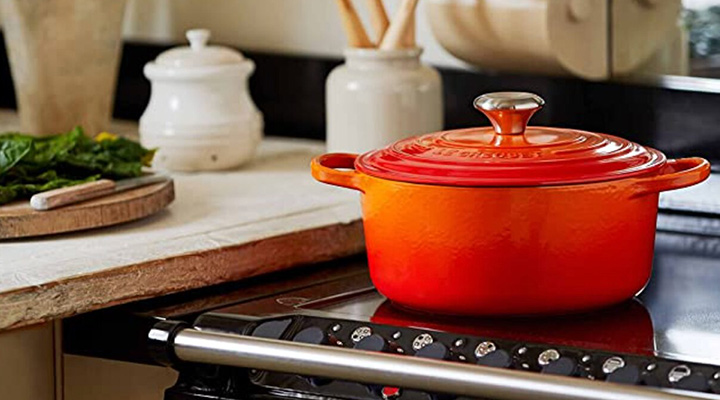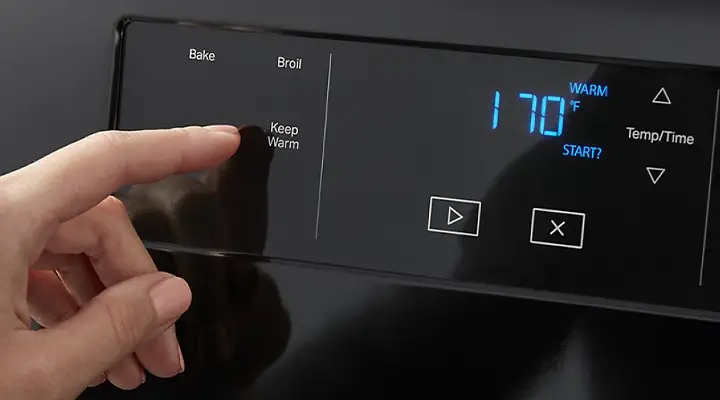What are the Reasons Oven Light Flickering on and off
For hundreds of years, ovens have been incredibly temperamental, and this hasn’t changed. The following handy guide examines some of the most common causes of your oven’s light flickering on and off without apparent reason. This could happen for a number of reasons. Do not use the oven until the issue has been resolved if you experience any of these issues.
You need to pay attention to ovens that suddenly light on/off. You need to take immediate action when you see light flickering for any number of reasons. It could be a blocked ventilation system or a problem with the temperature or heating elements, or a problem with an electrical component or control board.

My Oven Light Keeps Flickering on and Off | Reasons
Blocked Ventilation or Failure of Cooling Fans
In modern ovens, every part is designed to ensure food and people are safe. A powerful cooling fan pulls cool air from outside the oven and exhausts hot air out the back, which is then filtered by improved ventilation systems. Due to this highly efficient airflow, your favorite meal cooks perfectly and stays hot for a long time without drying out.
To keep itself cool, your oven processes quite a bit of air while using it. It is possible for the temperature to rise if the food in the oven blocks the vent. This will cause the oven light keeps flickering on and off. This is a safety measure to prevent you from becoming injured or having your home catch fire if one of the vents becomes blocked.
If you can resolve this issue on your own, it is a technical problem. You might have a problem with your cooling fan if your oven light flickers off by itself. Check whether it works by plugging the oven in and waiting about ten minutes to see if it works. You are fine and you don’t have to worry about the hot air blowing out from the fan.
You can clean the vents with a soft cloth or vacuum if there is any dust or buildup. Moreover, the cooling fan should also be checked for proper functioning, and if any dust has collected there, you should completely clean it as well.
Before you begin cleaning your oven, unplug it first. Make sure all air vents are cleaned. Clean the vents each time you use them with a damp cloth to ensure smooth airflow.
Sensor or thermistor failure
It’s a little, thin metal piece that conducts heat that measures oven temperature (thermistors). In use, the oven heats up the sensor, which is mounted in the oven. A temperature reading is provided by measuring the change in resistance of the thermistor when this happens.
In the oven, the temperature can be controlled more easily with a thermistor. This prevents the temperature in the oven from changing and gives your food the perfect amount of heat. The thermistor monitors the temperature inside and controls power to the heating elements according to the current temperature inside the oven. Ovens that light flickering on and off because of faulty thermistors are the most common cause of faulty ovens. Thermostats, along with some other elements, but mostly the thermistor, need to be checked when this happens.
In your oven, the thermistor is the heart of heating. If it fails, it can result in catastrophic consequences. Consequently, the oven overheats, and the light flickers on and off due to incorrect information being sent to its brain. Having to cook the food you haven’t finished is bad news for you because you can waste both time and money.
Using a screwdriver and a small Phillips head, replace a faulty temperature sensor. The old sensor needs to be removed first by removing the screws. Pull the capillary tube from the back of the oven once you have loosened the connections. Then, remove any remaining screws holding the sensor on the back end and disconnect all electrical connections. Simply reverse these steps to replace the old one with a new one.
Element failure in the heating system
You cook food in ovens using heating elements. If something is too close to your oven’s heating elements, it can burn out. You should open the door if you detect a drop in temperature and remove anything near the heating elements that might be causing the drop. Moreover, if your baking temperature isn’t working well, the temperature sensor or thermostat might malfunction. Your oven will also wear down and begin to deteriorate after repeated use, just like any other appliance. An oven’s heating elements can become damaged or bent, causing it to overheat. Oven wiring issues can also lead to underpowered heating elements.
Troubleshooting electrical issues
The next step is to check the electrical system to see if it has anything wrong with it. This should be done after you have eliminated all the usual reasons for the malfunctioning oven. The inside of any product that can be attached to a power source has many wires and circuits. Electrical appliances can fail at any time for the same reason they are so robust. Overheating or mechanical damage to the appliance are the most common causes of failure. It is most likely a broken wire that is causing your oven to malfunction. Electric appliances often malfunction due to broken wires. It may also happen that the wire at the attachment point has come loose.
Having problems with the control board
In this case, the control board should be the first thing you check if your oven light flickers on and off its own. If it’s faulty, you will need to replace the board. The replacement of your oven’s control board could be worthwhile if the oven has experienced control board issues in the past.
In the event that this has not been the case, it may be more economical to just buy a new oven. It is possible for your oven to light flickering on and off its own for a variety of reasons. Maybe the temperature control is faulty, the door switch is not working, or the control board is malfunctioning. A control board controls and regulates the operation of an oven. Upon expiration of the timer, the oven will also light flickering on and off itself.
Why Does My Oven Light Go on and off?
You may notice your oven lights turning on and off sooner than you expected for a number of reasons. Depending on the issue, there may be an easy fix or a specialist may be required. What might cause your oven light to go on and off? Let’s find out
⦿There’s a chance the problem is not with the oven but rather with the light you’ve tried — all the same make, model, and spec. Use only bulbs recommended by the user manual for your appliance. It is also crucial that a bulb be designated as appliance-rated if it has the correct wattage, connectors, and dimensions.
⦿In older ovens or those impacted by oven shelves, trays, or pans, a loose connection in the lamp fixture can cause its bulbs to blow. Rather than simply flowing through a physical contact, an electric current has to jump or “arc” if the bulb doesn’t fit tightly into the housing. During an arc, immense heat is generated, which becomes the cause of the bulb blowing. You will need a licensed technician to replace or repair the light fixture.
⦿The occasional blowing of your oven’s light could signal wider electrical problems, which could have a connection to the appliance’s motherboard, the power supply, or even the wiring in your home. To check for a problem with an oven, turn off the power at the power supply and contact a professional.
Frequently Asked Questions
What Does It Mean When Lights Flicker When an Appliance Turns On?
Electrical systems can be damaged by overloaded circuits. Flickering lights may be caused by large appliances and HVAC units because they’re drawing a great deal of current. If this is the case, either the appliances’ wiring is inadequate or the circuit breaker is not performing well.
Why Does My Oven Light Keep Turning On?
A door light switch that is not connected to the oven door will keep the light on in the oven. Press the switch on the door right after you open the oven door. This will let you know if you need to adjust the door.
How Do I Fix My Oven Light?
You will need to replace the light in your oven if it breaks or stops working so you can continue checking on food inside the oven without having to open it and let heat escape. It’s an easy process that you can complete on your own and is relatively quick.
Conclusion
Perhaps there is a loose connection, a bad switch or a blown breaker, or a loose/bad bulb or fixture. This can lead to a fire if left unchecked. The transformer may also not be rated correctly or malfunctioned. Other residents on the same transformer would generate this condition if they consumed a lot of electricity.
You can contact the power company or an electrician to have your transformer diagnosed. If it’s not their fault, the utility may charge you. The cost of calling a power company will still be charged to you by the electrician. The light bulb should be changed first, and the fixture should be inspected for visible damage such as loose and burned wires. You may be able to solve the problem with an old incandescent bulb.

